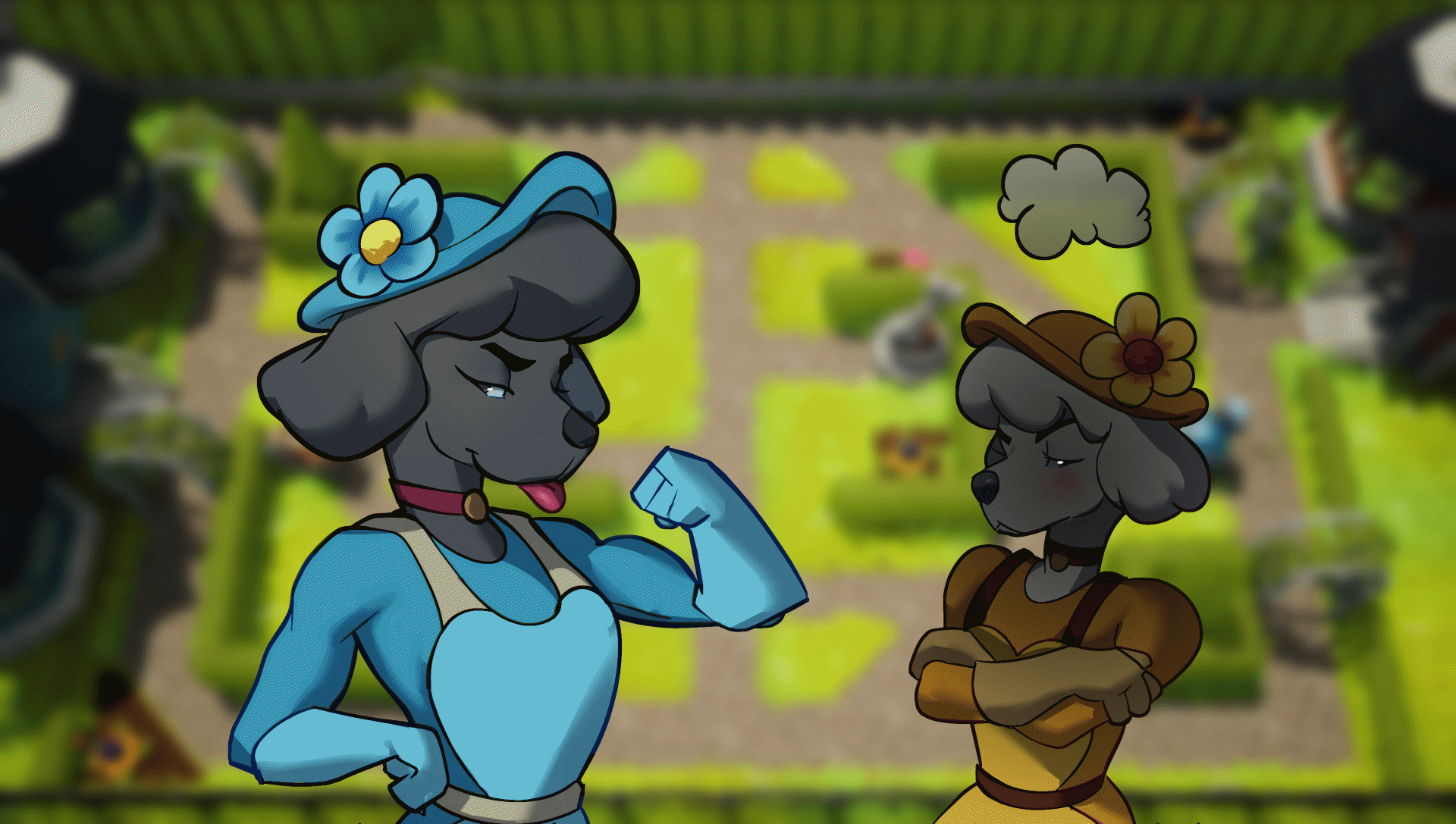a Top-Down Local PvP game
Role: Level Designer
Mowdown is a friendly Top-Down local PvP game where two neighboring dogs fight over the garden shared by their two houses riding lawn mowers.
Team: 14
8 weeks
UE 5
Project Role:
Level Designer
Whitebox in UE5
Competitor analysis
Sketching
Collab with artists
QA testing
Design documentation
About Mowdown
Dogs on Lawn Mowers
Plants = Ammo
Couch PvP
Mowdown is a friendly couch PvP game, where you play as two dogs riding lawn mowers, picking up plants, using them as ammo and competing against each other over the garden shared by your two houses.
Each ammo type offers different benefits and players have to position themselves tactically, using their environment to gain advantage.
Gameplay
Project Work
Arena Layouts
To determine what forms of gameplay and player experience we aim to create with our game as well as to draw inspiration and identify our target audience we took a look at the genre of Top-Down Tank PvP games and assembled a list of reference games that would help us solve design problems throughout the development.
Game Research
Reference Games
Research Document
Throughout development I made sketches to concept ideas and to communicate design intent to the team. Clear sketches with good visual communication proved to be a great way to share and develop gameplay ideas.
Sketching
Initial sketches of early map ideas
One-pagers served to give a coherent overview of the design intent of a certain arena that could be used as a benchmark in playtesting.
Documentation
Layout One-Pager
Level design pillars
In this game whoever manages to position themselves the best to shoot and to avoid getting shot wins. Players have to think tactically and the Level Design serves to reinforce that using corridors, chokepoints, points-of-interest, covers and so on.
Tactical Positioning
Besides tactical movement the game revolves around gathering different ammo types by picking them up. The placement of these pickups in the level serves to create intense tactical scenarios where players have to fight over resources and use different ammo types in combination with the environment.
Resource-Driven
To allow the players to assess their environment and think tactically all affordances and gameplay options need to be clearly visible: what gives cover, what can you pick up, where is the edge of world, etc. To achieve that we strove to create simple, elegant and easily assessible layouts.
Readability and Simplicity
Testing and Iteration
A Conditions of Satisfaction document to track the progress of features
Organized internal and external playtesting sessions
Playtesting goals and questions prepared
Data-gathering tools such as a heatmap tool (created by our programmer) to better analyze player movement on the maps and determine what LD ingredients fulfill their purpose
Iteration logs to document playtest findings and create an iteration plan
Heatmap tool output after a playtest
Our last LD iteration log
Project reflection
I had a great time with this project and improved my collaboration as well as design skills massively. A lot of aspects of game development I encountered for the first time here, thus I had a lot to learn. My biggest learnings related to:
Working with other disciplines
Learning the perspectives of my teammates from environment art or programming was a process essential for good collaboration. I experienced for the first time how for example the goals to achieve good aesthetics and fulfill the design intent can clash in team member priorities. How to communicate those conflicts, set team priorities and compromise if necessary were all important things I learned in this project.
Gathering and assessing useful data
Conducting playtests took a lot longer than I anticipated and assessing the feedback even longer. On the other hand the data gathered in these playtests was the key to make significant improvements for the game, so I concluded that dedicating enough time to quality assurance and having this in mind while planning is crucial.
Being receptive to feedback and acting on it
We held 2 Peer review sessions in this 8-week project, so that we could check in the 2nd session how well we acted on the feedback since the 1st round. I found that this feedback represents how good of a team member, how efficient of a collaborator I am in the eyes of my peers and so I took it to heart and was glad to hear in the 2nd peer review how they noticed me to have improved in a lot of regards.





















